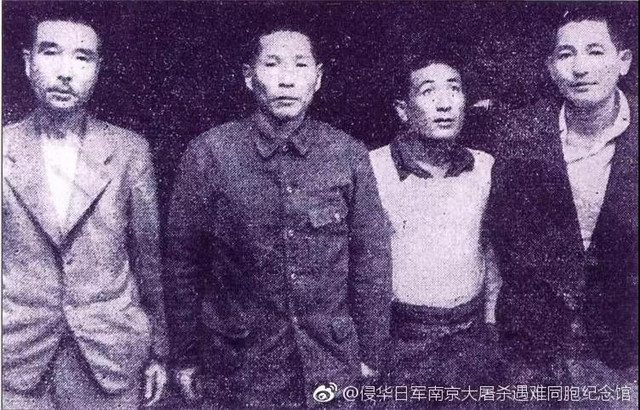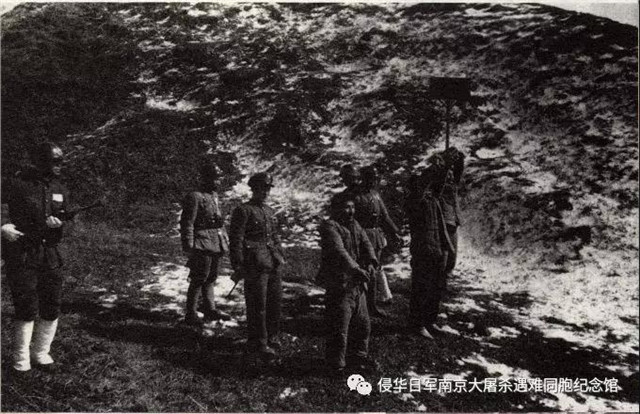Japanese Media Followed the Report on the “Competition of Killing 100 People” 82 Years Ago
On December 13, 1937, Tokyo Nichi Nichi Shimbun (lit. Tokyo Daily News) published an article with the headline reads, 'Incredible Record' - Mukai 106 – 105 Noda—Both 2nd Lieutenants Go Into Extra Innings", and attached a photo taken for them by Shinju Sato near Changzhou city.
In fact, this is the newspaper that tracked the series report on the Beheading Competition for the fourth time. Since November 27, 1937, the two lieutenants started the competition in Wuxi after its capture by the Japanese Invaders, and the newspaper's three correspondents (Asami, Mitsumoto, and Yasuda) interviewed them in front of Changzhou Railway Station.
The first report on Tokyo Nichi Nichi Shimbun on November 30, 1937 was titled Competition for beheading 100 enemies! Two lieutenants already got 80 people. “Two young lieutenants of Katagiri Unit started the Competition of Killing 100 People. We heard that since Wuxi, soon one has killed 56, and the other 25.” One lieutenant was Toshiaki MUKAI, 26, of Toyama Unit; the other was Tsuyoshi NODA, 25, of the same unit.
As the Third-dan grade attainer of kendo, Mukai has a blade of "Seki-no-Magoroku” hanging in his waist, while Noda’s blade was handed down from his ancestors, although it has no inscription.
On December 2, the two attacked to the county of Danyang with the troops, and the number of their killing has increased significantly, especially Noda. He was lacking behind, and then his number of killing more than doubled, and the two had then killed a total of 151 people.
On December 4, the Tokyo Nichi Nichi Shimbun reported on the competition for the second time under the title "Competition progresses rapidly, Progress of competition for beheading 100 enemies":
On the way to Nanjing, Katagiri and Toyama units that joined the killing competition, lieutenants Toshiaki MUKAI had killed 86 and Tsuyoshi NODA had killed 65 people since Changzhou. Before entering Danyang at 6pm of 2, the two almost tied.
On December 5, Mukai and Noda had already killed 89 and 78 people respectively at the Jurong front, with the gap further narrowed. Correspondents Asami and Mitsumoto soon sent to the newspaper the 3rd report, and Shimbun published the article “Close competition for 100 enemies! Brave officers Mukai and Noda! 89:78”:
Two young officers of the Katagiri unit, Toshiaki MUKAI and Tsuyoshi NODA, carried out the " Competition of Killing 100 People" with Nanjing as its target. When the two second lieutenants captured Jurong city, they rushed to the front and fought bravely. Until the fall of the enemy, the two achieved a close match: MUKAI killed 89 and NODA killed 78.
December 10 at noon, Mukai and Noda met again at the foot of the Zijin Mountain in the eastern suburbs of Nanjing. Their score was 106:105, but the race to kill 100 was resumed because of confusion over who killed over 100 first. Hence, they started another competition of killing 150 first, and the newspaper made the fourth report that introduces this.
The news of the Japanese "killing competition" was reprinted by the western media at that time and had a wide influence.
Powell, the editor-in-chief for the China Weekly Review (also known as Millard's Review), interpreted the truth of the matter from behind the news. He was keenly aware that the Chinese killed by the two Japanese officers were civilians. Because "almost all the Chinese government troops withdrew from the cities along the 200-mile line between Shanghai and Nanjing, and the Japanese soldiers marched in from Shanghai, along the line, and captured Nanjing."
The Millard's Review published on January 1, 1938, with the title "How lieutenants Mukai and Noda Exceeded Murder Quotas". The article said, “This act clearly revealed the atrocity of killing, burning, raping and pillaging by the Japanese army after entering Nanjing. Foreign missionaries can testify to the Japanese army's obsession of killing."
Japan surrendered unconditionally in 1945. In 1947, Gao Wen-bin, secretary of the Chinese prosecutor Xiang Zhe-jun of the International Military Tribunal for the Far East, found photos of Toshiaki MUKAI and Tsuyoshi NODA holding blades in the wartime Tokyo Nichi Nichi Shimbun, accompanied by written reports. The evidence was conclusive.
On May 8 of the same year, the Chinese Commission on War Criminals made a resolution, requesting the Chinese delegation to Japan to request the headquarters of the allied forces in Tokyo to extradite the two war criminals Toshiaki MUKAI and Tsuyoshi NODA, who had engaged in a killing contest during the Nanjing Massacre, to China for trial.
After careful reconnaissance, on August 20, 1947 and September 2, 1947, the allied headquarters in Tokyo arrested the hiding Toshiaki MUKAI and Tsuyoshi NODA. On October 25, the two prisoners left Japan on a ship called Heshun, accompanied by captain Luo Bing-zhong, a Chinese military police officer. On November 6, the two war criminals were taken to Nanjing and sent to the Xiaoying detention center of war criminals.

Toshiaki MUKAI (first from right) and Tsuyoshi NODA (second from right) brought to justice in 1947
At 10:10 a.m. on December 18, 1947, the Nanjing War Crimes Tribunal conducted a public trial on Toshiaki Mukai and Tsuyoshi Noda. At 2:10 p.m., trial chief Shi Mei-yu announced in court that the war criminals Toshiaki Mukai and Tsuyoshi Noda sentenced to death.

On 28 January 1948, Toshiaki Mukai and Tsuyoshi Noda were executed at Yuhuatai execution chamber.
This article summarizes content from The History of Nanjing Massacre (Editor in Chief: Zhang Xian-wen, Deputy Editors: Zhang Lian-hong, Wang Wei-xing) and Black Memories: Nanjing Massacre (Writers: Zhang Lian-hong, Liu Yan-jun).

